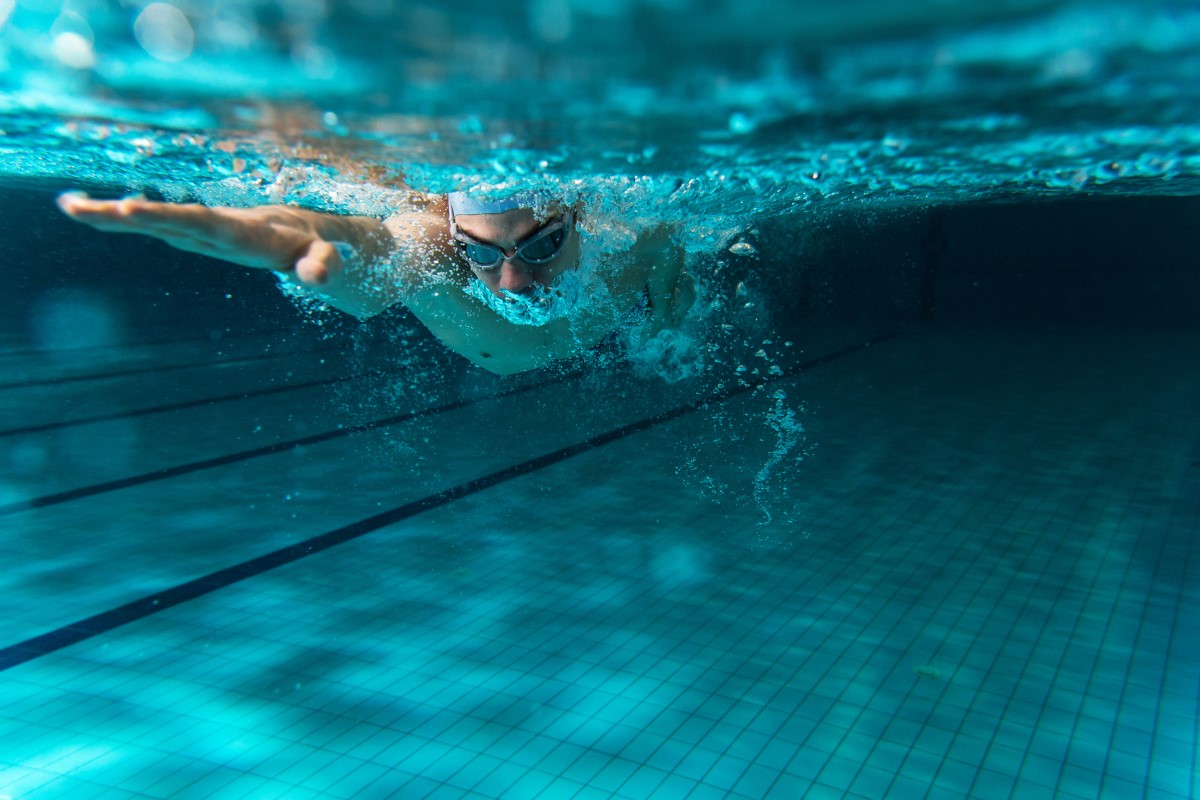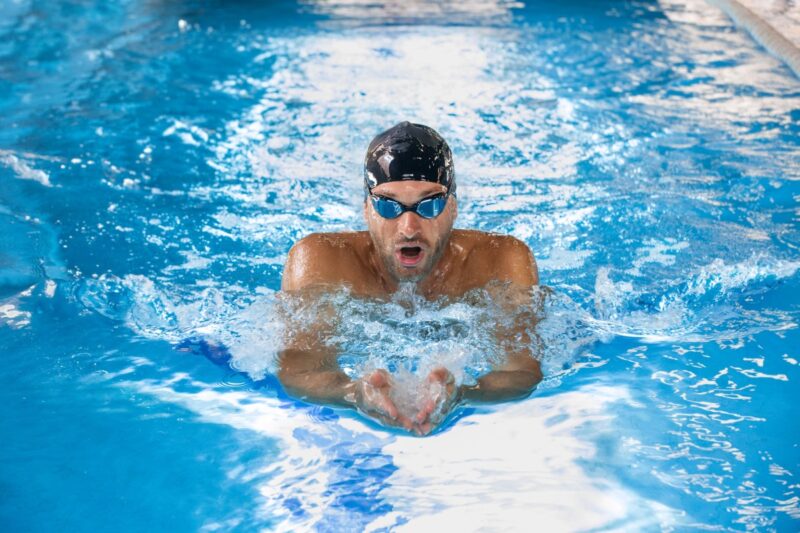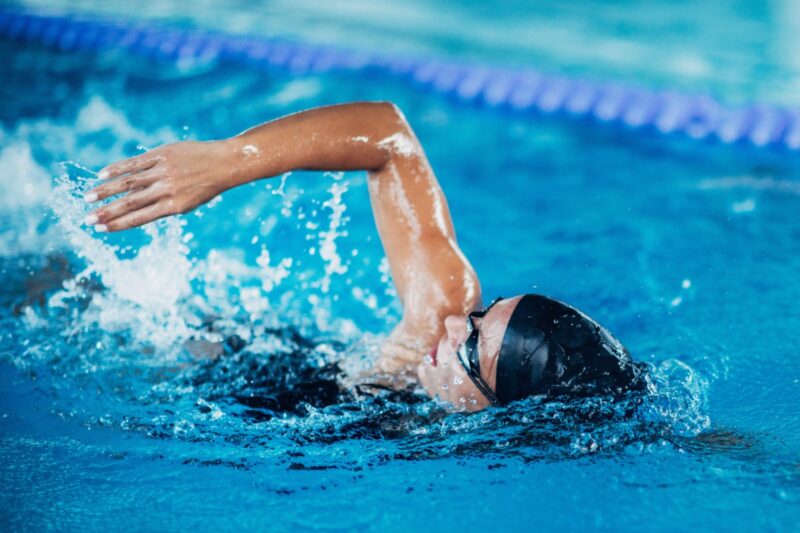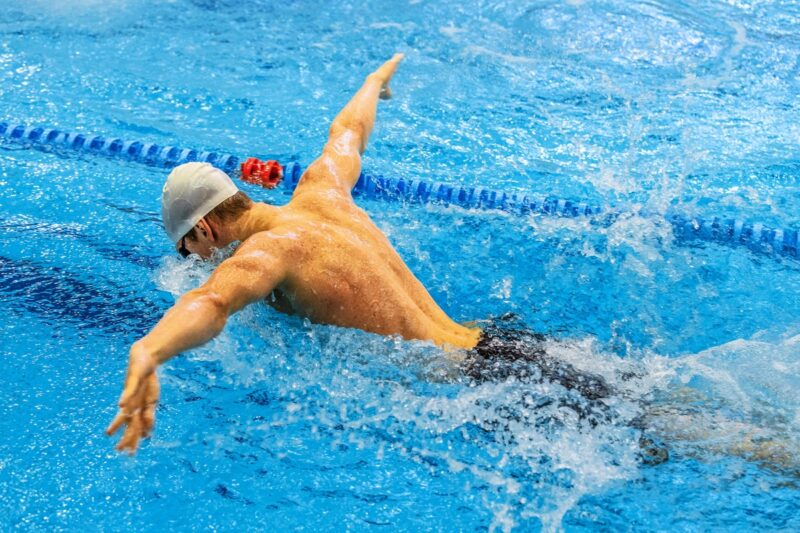
Swimming is a popular form of exercise. You can find a public pool almost anywhere. Since there are so many different swimming strokes, taking up this sport has never been easier. Some people also build pools in their backyards. In smaller home pools, options like swim jets can help you swim like you are in a lane.
If you are swimming on the regular, choosing your main stroke is essential. There are four common ones. Each has its benefits and drawbacks. Let’s talk about them!
1. Breaststroke
There are many different swimming strokes. However, beginners usually learn the breaststroke first. So it’s easy to discount it as an easy stroke without any real benefits. However, this is not the case!
Benefits:
- Good cardiovascular workout
- Easy to learn
- Tones leg and back muscles
Get your heart pumping by practicing the breaststroke! When performing this stroke, you rely heavily on your legs to propel yourself forward. Using the back of your body to support yourself helps you quickly move through the water. Plus with a few lessons, anyone can perform this swimming stroke.
Drawbacks:
- Less fat-burning potential
- Slower stroke
Being supported primarily by your legs has its cons. When you swim the breaststroke, you cannot swim as fast. Although this may be good for endurance swimmers, burning calories can be a long and tedious process. There are better alternatives when it comes to exercise.
2. Front crawl
Also called the freestyle stroke, this is the fastest way to get through the water. You drag yourself through the water while being propelled by fast flutter kicking with your legs. The challenge that comes with this is facing down in the water. You must learn the right breathing techniques to get the most out of this popular stroke.
Benefits:
- Fastest stroke
- Works the chest, lateral and back muscles
- Good for pushing yourself
Every muscle in the body is used during this swimming stroke. There are several drills to try out when it comes to the freestyle. Check out our video series to see some of them in action!
Drawbacks:
- Challenging to execute
- Finding a breathing routine
Knowing how to move the right parts of your body is challenging in itself. It’s recommended to find an instructor or coach to do the freestyle properly. An expert will show the right techniques and how to breathe in the water. This will prevent you from getting worn out and tired while exercising.
3. Backstroke
Here is a stroke that’s pretty self-explanatory. The backstroke is relaxed and uses a different set of muscles from other strokes. It’s useful to learn and incorporate into your workouts. You will get more from your swim sessions by using this one to switch things up!
Benefits:
- Works your back muscles and hamstrings
- Less emphasis on breathing
- Improves flexibility
There are quite a few upsides to brushing up on your backstroke. As you are floating on your back, you give it a workout. Additionally, your hamstrings will feel the burn because you have to keep your body straight in the water. Facing up also means you can perfect your stroke without worrying about breathing. Plus your body will become more limber.
Drawbacks:
- Difficult to balance
- Not being able to see where you are going
Gravity is not on your side when performing the backstroke. You must use your arms and legs to propel yourself across the water. Having proper posture is a big part of this because your body needs to stay straight to stay afloat. However, that is not easy when you can’t see where you are going!
4. Butterfly
Mastering the butterfly stroke is an achievement in itself! When it’s done right, this stroke looks beautiful. Of all the different swimming strokes, learning this one is the most intimidating. Swimmers must swing both arms simultaneously and pull back under the hips to move forward. The legs and feet snap together in a dolphin-style kick.
Benefits:
- Burns the most calories
- Works out the core, shoulders and chest
- Stand out in the pool
The butterfly stroke burns the most calories for a reason. It requires you to move the most muscles out of all of them. Your core, shoulders and chest will be pushed to their limits as glide through the pool. Spread your arms out like butterfly wings and you are sure to get a decent workout. You won’t see many other swimmers trying this out either!
Drawbacks:
- Hard learning curve
- Complicated body movements and breathing strategies
Like the time it takes for a caterpillar to turn into a butterfly, you will have to have patience while learning this stroke. Some lessons or a swim coach will keep you from getting injured and show you the proper techniques. Moving your body and breathing the right ways are both important here.





